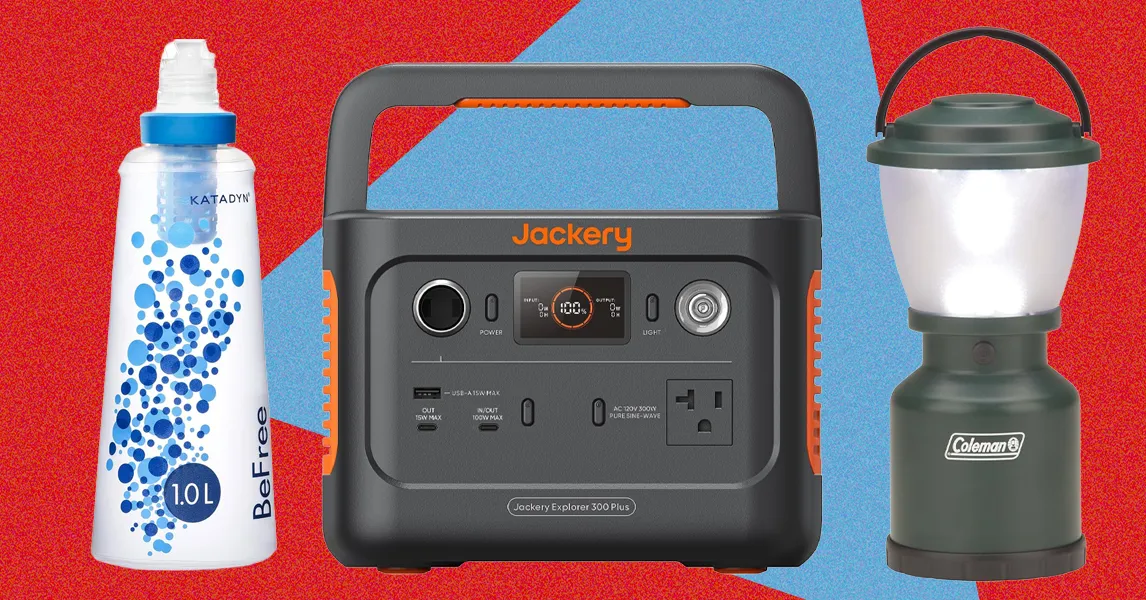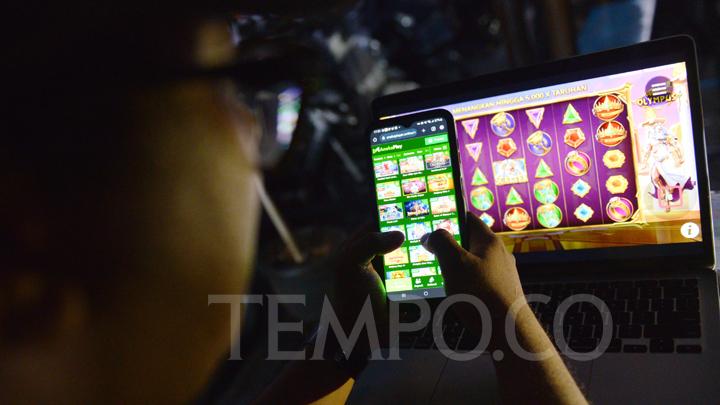Copyright WIRED

You never know when you're going to have to bug out on short notice. The politics of the moment are less than predictable. Disasters never strike on schedule, and few stores stay open for a hurricane or an insurrection. That’s why it’s important to make plans well in advance and put together gear for an emergency kit, say experts on disaster preparedness—and to stock up on the essentials that can keep your family healthy and safe in the event of hurricane, flood, earthquake, wildfire, or all-too-human failures. But not every disaster is the same. There are two main scenarios you should keep your family prepared for, says Jonathan Sury, a senior staff associate at Columbia University’s National Center for Disaster Preparedness. In some cases, you may have to jump into a car with a go bag, or a bug-out bag, outfitted with the barest essentials, such as a three-day supply of water, purification tablets or water filters, a good flashlight, and batteries. In others, you may be left sheltering in place, possibly without tap water or access to the power grid—and in serious need of a good power bank or two. Here’s how to prepare for a shorter-term emergency—and what to stock up on in advance. This isn’t a survival guide to civil war or the apocalypse, of course. But the advice and gear here should help you and your family safely weather a natural disaster such as a storm, a flood, an earthquake, or a wildfire–not to mention a systemic failure in your water system or power grid. Also take note of my colleague Adrienne So’s advice that the best form of emergency prep involves getting to know your neighbors, and WIRED’s Guide to Surviving Extreme Weather. More worried about losing your job? Check out WIRED’s guide to a Digital Go Bag for when you’re forced to bug out from work. What Should You Put in Your Emergency Go Bag? Often, you have a bit of warning before an emergency lands on your doorstep. But an evacuation order can arrive with unsettling suddenness—and by the time everyone in your area is raiding the local supermarkets for water and purification tablets, it may be too late to secure your own. Your list of essential items for your emergency preparedness kit will depend on your circumstances, your family, and your needs. As of October 2025, the Federal Emergency Management Agency keeps an emergency kit checklist on its website. Columbia University also maintains online resources on how to prepare or respond to specific disasters and emergencies, including an online preparedness wizard to help each family understand their own emergency needs. But it's also good to maintain a baseline emergency kit so you and your family are ready for … whatever. Here’s a good starter kit of essential items to put in your go bag and keep ready at home or in the car. Fresh Water (and Water Purifiers) Courtesy of Aquamira Aquamira Water Treatment Drops Photograph: Scott Gilbertson Katadyn BeFree Water Filter Sury and other emergency preparedness experts recommend keeping a gallon of water per person per day, not just for hydration but for food preparation, sanitation, and all the other nice things we need water for. Sury keeps a week’s supply of water at the ready at home, which can be purified with simple household bleach in emergency situations. (Be careful if doing so, and follow the Environmental Protection Agency’s advice on dosing.) But practically speaking, you’re not likely to have room for a full week’s supply of water in your car’s trunk if you're on the move. This is where water filters come in for refills, especially if you won’t have guaranteed access to a water supply you can trust. For easy-to-carry chemical purifiers, WIRED reviewer Scott Gilbertson favors Aquamira’s water treatment drops ($15), which fit easily into any emergency bug-out kit. Sury says Aqua Tabs ($11) are an excellent, broadly available brand. But for simplicity and ease in filtering out microorganisms and particulate matter, you might also consider the Katadyn BeFree ($45), a water bottle with an attached filter. For an inexpensive filtration option for the whole family, Lifestraw makes an affordable personal water filter ($17) that you can suck through like a straw. Nonperishable Food Rations Courtesy of Maruchan Maruchan Instant Chicken Ramen (24 Ct.) FEMA recommends keeping at least a few days’ nonperishable food ready at hand. In practice, you’re likely to grab whatever Snickers bars, granola, ramen packets, and other dry goods you’ve got in the house on your way out the door. Sury says nutrient-dense canned foods like beans or sardines are also a great option, with the caveat that cans tend to be a bit heavy and often require a can opener. But nothing is quite as portable and durable as dehydrated food. One of the oldest makers of dehydrated food kits in the country, with roots in military rations, is Oregon brand Mountain House, which offers portable, 3-day emergency meal kits ($70). Nutrient Survival also offers a 14-day emergency food kit ($200) that includes lasagna and mac and cheese. Just don’t expect rehydrated food to taste quite like the original. This said, doesn’t everyone always have an emergency crate of two dozen extra Maruchan ramen packets? I cannot be alone in this. An Excellent Flashlight Dare we suggest … the absolute best flashlight? One that you can drown in water—and thereafter purify water by the light thereof? A Lantern Courtesy of Coleman Coleman 4D LED Camp Lantern Flashlights are great for walking around. But for holding still, you want a lantern. There are plenty of fuel-based options available, of course, but a long-lasting, battery-powered Coleman LED lantern ($22) is a tried-and-true, no-frills option that promises 175 hours of life before you have to change the batteries. A First-Aid Kit You can, of course, buy a ready-made emergency kit from the American Red Cross ($43), or this one meant to stay in your car. Adventure Medical Kits also makes a more extravagant Mountain Series Explorer Medical Kit ($83). But for the frugal, see this guide to putting together a better emergency kit yourself for less money. Face Masks Courtesy of Honeywell Honeywell Safety DF300 N95 Disposable Respirator Sometimes what you're worried about is disease. Sometimes it's wildfire smoke. Or particulate matter from lord knows what else. But have you ever regretted having some nice filtration face masks lying around? Digital Document Backups The biggest category people tend to neglect when thinking about emergency preparedness, says Sury, is intangibles. This can be as simple as having a family communication plan and prearranged meeting points, so you know what to do if members of your family are separated. But also, it’s important to have digital backups of key documents, Sury said, “anything that is high value that may potentially get damaged in a disaster.” This may include insurance documents, titles to homes and cars, medical information such as prescription drug lists and instructions, doctor contact information, and photographs of passports and state identification. Likely you have access to one form or another of cloud storage. See WIRED’s guide to the best cloud storage services for each need and type of device, and make sure you use a good password manager to keep any sensitive data secure. But especially if internet access is not assured—or you’d prefer not to store some documents on the cloud—another secure option is a portable external storage drive that can easily be slipped into a waterproof pouch. WIRED reviewer Scott Gilbertson recommends OWC’s Envoy Pro Elektron SSD ($179) as a portable storage drive that’ll stand up to the elements and can get wet—and travel with you anywhere. Or just store the essentials on a USB flash drive like WIRED's top-pick, the SanDisk Extreme Pro ($42). A Burner Phone, a Passport, and a Faraday Bag Wait, does this seem dramatic? Well, maybe—but being safe is better than being sorry. Disaster takes many forms, and some of it is human. Here's WIRED's guide to how to procure and set up a burner phone in a way that can't be tracked. But to avoid trackers on phones, you'll also want a Faraday bag to block tracking signals, like an SLNT Faraday bag from Silent Pocket. True burner phones are not bought online. But if all you need is a search-safe phone to cross a border with, what you actually want is an affordable altphone severed from incriminating data: The Moto G Stylus 5G will serve your needs here. Portable Power Banks The world runs on electricity. The electrical grid can be fragile. Lithium-ion power packs are the modern answer—but it can be a volatile technology, so you don’t want to just resort to the cheapest ones. Among portable power banks and larger-capacity power stations, WIRED testers have long recommended portable devices from Jackery—ranging from the 8-pound, 288-watt-hour 300 model that also includes solar options to a 62-pound behemoth with about seven times that capacity. For Your Car: a Jump-Starter In addition to basic power banks, you'll probably want to make sure you can jump your own car without need of (overwhelmed) emergency personnel. WIRED testers have had excellent luck with devices from Noco and Gooloo. A Radio Courtesy of Sony Sony ICF-506 Radio Yes, a radio. You know, that thing in your car that you plug your iPhone into sometimes? Anyway, whatever's going on with the internet or the satellites, a radio is a good source of emergency information. Have one. The classic prepper advice is a handcrank radio. But for shorter-term emergencies, batteries are also a thing. Downloaded Emergency Phone Apps Another thing people forget to do until the internet is already down? Download emergency phone apps. As of October 2025, FEMA has an app. Your local municipal or state government likely also has opt-in emergency push-notifications: Consider opting in. WIRED has also cataloged a number of other personal safety apps, including a subscription service called Rescu that can connect you directly to first responders. Extra Batteries Whatever portable battery-operated devices you own? Have extra batteries for them. A Cooler and Ice Packs Courtesy of Pelican Pelican Elite 20QT A cooler is helpful to keep food fresh, of course. But also, a lot of medications need to be temperature-controlled, noted Columbia disaster preparedness expert Sury. And so if this is someone in your family, a small cooler can also be a piece of emergency equipment, when combined with an ice pack or two from the freezer. Games for the Kids Courtesy of Nintendo Nintendo Switch 2 This is another neglected item that’s recommended by everyone from emergency experts to everyone who’s ever met a child. In stressful or protracted situations, trust in distraction. This can be as simple as a book of puzzles, a good building kit, or the foresight on the way out the door to grab the Nintendo Switch 2 and a small power bank like WIRED’s top-pick Nimble. Medical and Personal Items In addition to prescription medications, an over-the counter painkiller and antacid tablets are helpful additions to any emergency kit. So are feminine hygiene products. So are toothbrushes and toothpaste. Sanitizers An emergency is a bad time to catch a stomach bug or any kind of infection. “Anything to maintain hygiene, that's so important,” Sury says. “Especially if we don't have water running, we just don't want to get any kind of virus transmission, or fecal, orally transmitted bacterial infections.” And so hand sanitizers end up being … a big deal. So are good ol’ disinfecting wipes. Nitrile Gloves Courtesy of Medpride Medpride Powder-Free Nitrile Gloves The world is full of awful stuff. And in some kinds of emergencies, contaminants are a genuine concern. Nitrile gloves will help you not touch it, and they’re resistant to cuts and tears. They're also essential in first-aid situations. An Action Plan for Pets Do you plan on leaving Fido or Meowser behind, when the rains come to wash these streets clean? Assuming not, maybe keep a pet carrier with portable food and water dishes handy. If you have horses? You'll need to own a trailer and something that can tow it. If you have a pet boa constrictor, I don't have good advice. [I do have a pet boa constrictor, and I recommend putting it in a pillowcase. —Ed.] Additional Useful Items A can opener, to open cans. A pair of scissors for all sorts of things. Duct tape and sheeting to build temporary shelters or provide cover from rain. A box of matches in a ziplock baggie. A notepad and a pen. Non-shatter plates and cups, whether paper or metal. Paper Maps of Your Region Yes, they still exist. Yes, they're a good idea.



